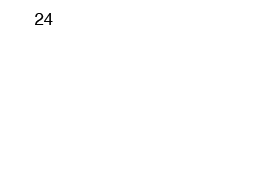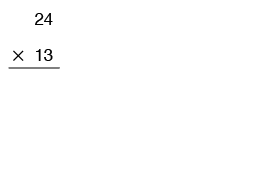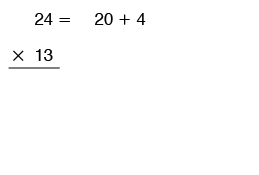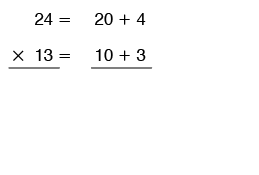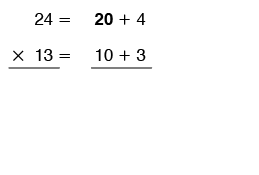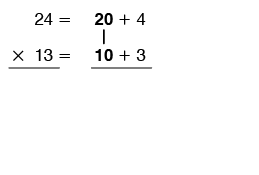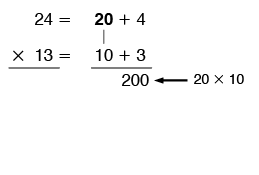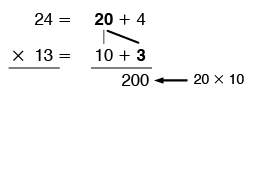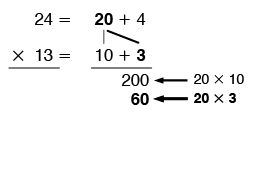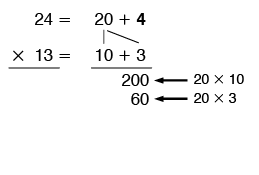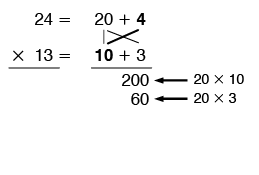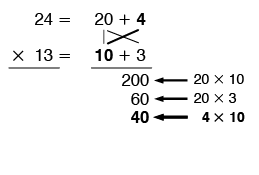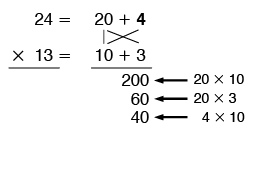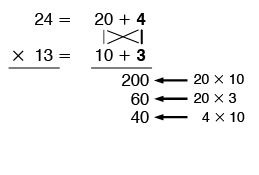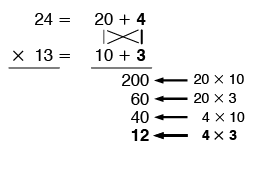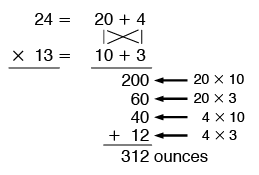Yellow
Green
Blue
Red
Magenta
Remove
Expanded Form with 2-Digit Numbers
John said, “I liked it when we multiplied using the expanded form. Can we use that
method when both the numbers we are multiplying have two digits?”
“That's an interesting question, John.” Mrs. Dewey responded. “Let's give it a try.”
John broke 24 and 13 into tens and ones.
He wrote on the board:


Mrs. Dewey said, “Let's just do the first part, just as if the bottom number only had
one digit. How would you multiply if the bottom number were just 3 or just 10?”
John wrote the problem twice:


- How did John get the two partial products 200 and 40?
- How did he get the two partial products 60 and 12?
- Look back at Grace's rectangle. Find John's partial products on Grace's rectangle.
Mrs. Dewey rewrote John's problem so it looked like this:
- Discuss with a partner how each number in Mrs. Dewey's expanded-form method fits into the partitions of the rectangles Grace drew.
- Solve the following problems using John's method or expanded form.
- 17 38
- 29 21
- 44 20
- 36 23


- Show how you can estimate to make sure your answer to Question 13B is reasonable.
- Choose a problem and show or tell how to solve it using mental math.
- Choose another problem and explain to a partner all the steps for solving it using the expanded form. Tell how you got all your partial products.
















